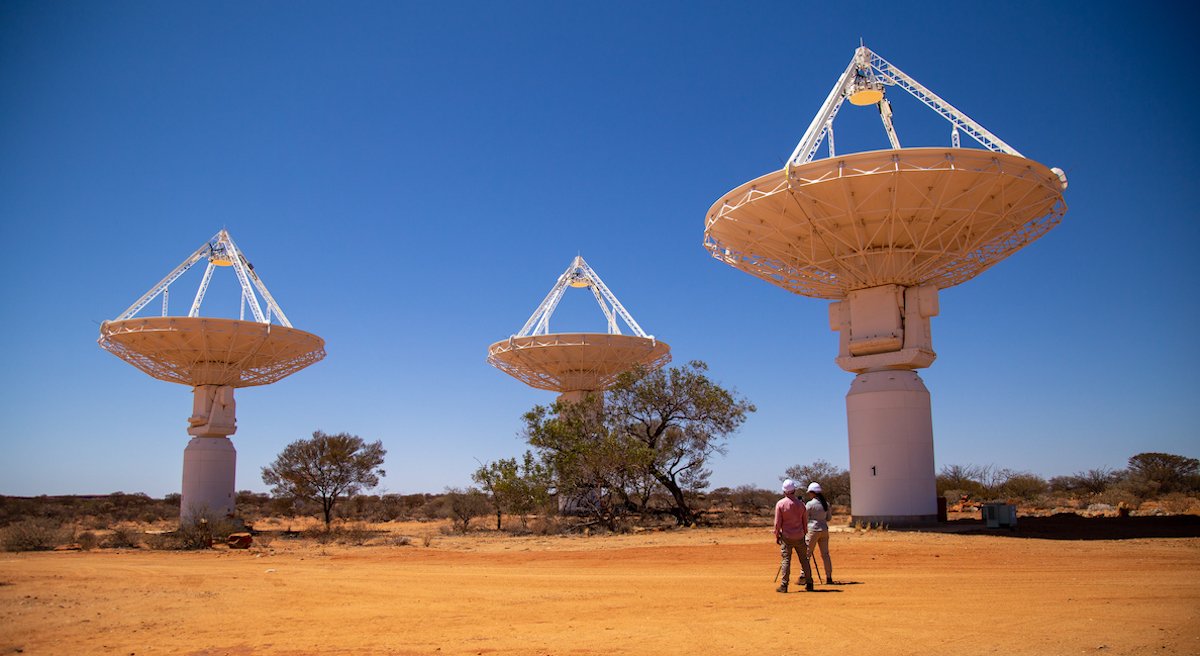TV TONIGHT: Doco project looks Beyond the Milky Way
WA producers White Spark Pictures to chart the key milestones and discoveries of the world’s largest telescopes.
WA factual producers White Spark Pictures will embark on a major new television documentary series, The World’s Largest Telescopes: Beyond the Milky Way.
Following the construction of the SKA telescopes, billed as the world’s greatest-ever scientific endeavour, the project will be launched to broadcasters at the World Congress of Science & Factual Producers in Glasgow next week. The first 2 x 60’ series (or 1 x 90’) will deliver in 2024. A further two series are planned, charting key milestones and discoveries over the course of the decade.
Briege Whitehead, founder and creative director at White Spark Pictures says: “With The World’s Largest Telescopes: Beyond the Milky Way we will be capturing a monumental, ground-breaking international project and I am honoured that all the leading scientific institutions involved are putting their trust in me to bring their endeavours to the screen and tell the SKA’s incredible story to viewers around the world. The telescopes will be capable of showing us so much over time – from how galaxies and black holes are formed to if there is life on other planets. Indeed, the established pre-cursor telescopes are already making major scientific breakthroughs on a regular basis, so what we will be able to learn over the next decade could not only redefine current levels of understanding but also reshape mankind’s future.”
Consultant Edwina Thring from Wild Thring Media adds: “The word unique is used a lot in TV production but The World’s Largest Telescopes: Beyond the Milky Way truly is a one-of-a-kind project that is destined to change the way we look at our world and the Universe. Such major event programming is rare and, as a result, we predict a groundswell of interest from international broadcast partners looking for standout unscripted content that will successfully bring people together in primetime.”
Effectively acting as a ‘time machine’, capable of seeing further into space than ever before, the SKA (Square Kilometre Array) project brings together astronomers, engineers and scientists from sixteen participating countries to build the world’s largest and most capable network of radio telescopes. The unprecedented scale of this project, eventually including hundreds of radio dishes across Southern Africa and hundreds of thousands of low-frequency antennas in Western Australia, will enable astronomers to observe the first stars and galaxies to exist in the Universe and give humanity its best-ever chance of discovering if there’s life beyond Earth.
After three decades of planning, the SKAO (Square Kilometre Array Observatory, the organisation which runs the telescopes) started initial construction activities around the world in July 2021. On December 5th, the next phase begins with a critical milestone in the history of the observatory, namely that start of on-site construction at two of the most radio-quiet places on Earth: outback Western Australia and South Africa’s Karoo. White Spark Pictures has negotiated unprecedented access to film this incredible feat of engineering, due to be completed at the end of the decade, as well as to capture international collaboration at play at the SKAO’s UK headquarters and the work of astronomers on the ground in both locations who will ultimately harness its power to solve the mysteries of the Universe.
This announcement from White Spark Pictures follows the launch of its immersive VR film Beyond The Milky Way, narrated by Professor Brian Cox, which premiered to enthusiastic audiences at the WA Museum Boola Bardip in Perth, Australia, last December. This half-hour VR film – which received primary funding from Screen Australia, in association with Screenwest and Lotterywest – is focused on the Australian site of the SKA and takes audiences on an immersive tour of CSIRO’s Murchison Radio Astronomy Observatory through the eyes of people working on the site, the astronomers who will eventually use the SKA and the Wajarri Yamaji traditional landowners. It will launch at other major Australian venues over the coming months, ahead of its international roll-out.
Published on November 26, 2022, by David Knox on tvtonight.com.au

